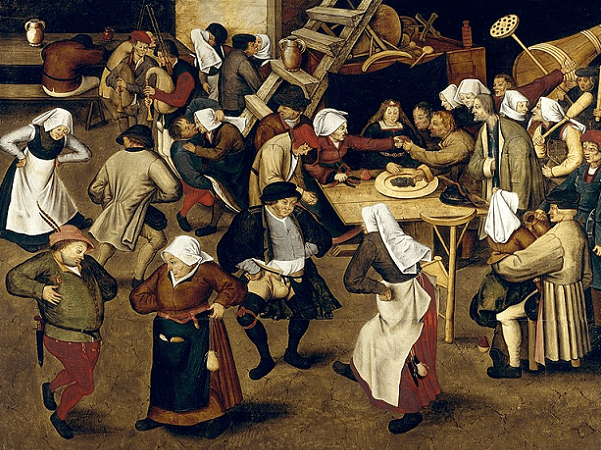The Irish are known for many things – their luck (or, historically speaking, lack thereof), ability to drink, gift of gab, literature, music, St. Patrick’s Day, their goodbyes, and much more. But when we put a magnifying glass over their culture, including the customs and traditions, it’s their weddings that are most pronounced. So, what are some Celtic wedding traditions?
Tying the Knot/Handfasting
An ancient Celtic tradition that has been around since the Middle Ages, handfasting is the practice of tying the hands of the betrothed together. In ancient times, this could occur days before the wedding. Two lovers could spend days together with their hands tied, all in an effort to deduce whether they truly wanted to spend their life in union.
With modern weddings, this tradition is usually reserved for the wedding day itself, executed before, during, or after vows.
Brehon Law
Brehon law, statutes first set forth in the 7th century within Gaelic areas, categorized handfasting as an official form of marriage. These laws were done away with once Elizabeth I further pushed English expansion in Ireland.
Today, if you’re ever at an Irish wedding (or one that has threads of the Irish) and witness the bride and groom brought to union by their hands being tied, know that the soon-to-be-married couple is paying homage to an ancient tradition that has survived for centuries.
“His Goose Is Cooked”
In centuries prior, on the day before the wedding or once the engagement was announced, the bride’s family would invite the groom over for supper. There, they would cook a goose in his honor and – in the 19th century and earlier – they’d also sign contracts and land rights that bound the two together (legally). Once the goose was cooked, it signified the solidification of the groom’s decision to marry the bride.
Thus, today, when you hear someone say “his goose is cooked,” that’s the Irish heritage’s way of saying “there’s no going back.”
In terms of customs and traditions, at the pre-wedding dinner party, a goose can be cooked to honor the Irish heritage.
The Claddagh Ring
Claddagh was a small fishing village right outside the old city walls of Galway city. It’s said that a famous blacksmith (who was bought by his master after his entire crew was kidnapped by pirates and sold into slavery) showed enough promise in the trade that his master offered him half his wealth and his daughter’s hand in marriage. Over the years, he set aside small pieces of gold dust and eventually melted them all into one ring: the Claddagh Ring.
The traditional Claddagh Ring features two hands clasping a crowned heart, symbolic of love, loyalty, and commitment.
Today, Claddagh Rings are passed down from grandmothers and mothers to their granddaughters and daughters. If it’s worn on the right hand, then the bearer is single and currently seeking love. If it’s on the left hand, she’s married. It’s often a gift that’s handed down from Irish ancestors and used as the wedding ring, in which case the groom does not need to purchase one.
Locking the Door
When you take the “tying the knot” tradition into consideration, then you learn of this “locking the door” tradition, you begin to deduce that perhaps Irish grooms were, well, squirrelly. For a bit of humor, a common wedding tradition in Irish culture is to – once the wedding ceremony has commenced – lock the doors of the church in case the groom catches a case of “cold feet” and attempts to flee the scene.
So, for those of you men having a traditional Irish wedding, if you decide to make a run for it at the marriage ceremony, the door might fight back when you try to push through it. It might be too late for you to not marry the bride!
Discover Your Traditions
While this article is only scratching the surface of Irish wedding traditions and customs, it has a bit of everything – the ring that’s passed down through generations, the knot, a goose that locks the betrothed into marriage prior to the wedding ceremony, and the church-turned-prison in case a groom decides to run.
If you have Irish in your blood, these wedding traditions and customs might be something you consider when the wedding bells ring and you “tie the knot.” Not only are they wonderful to incorporate, but they tell a story of a time before, one that contained the very people who brought you into being.
And if you find great interest in these old traditions, it might be worth researching your Irish family history to learn more. Unlocking your Irish family history might bring you more information than you were expecting.
And genealogy, like love, is all about discovering that which was always there, just hidden.
Sources:
- Ireland Information: Irish Wedding Traditions
- Ask About Ireland: Wedding Day Traditions
- Nice Day for a White Wedding? Within 21st century Ireland, is the notion of the “modern traditional wedding” still desirable? Maynooth University. National University of Ireland Maynooth. 29 April 2016.
Related Articles:
